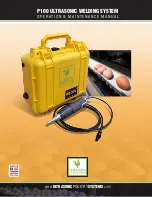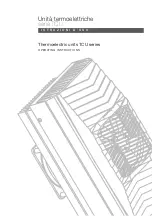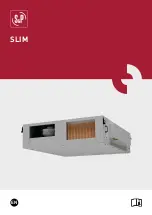
28 / 36
TF6775_A_NOT_DXR230_REFERENCE
Aereco S.A.
9.1. INSULATION OF THE INSTALLATION
In cases where the ductwork must be insulated, the use of prefabricated double wall ducts and
accessories should be favoured to obtain good thermal performance.
External insulation on site is possible,
but care must be taken not to create thermal bridges,
and the insulation must be attached securely enough to prevent its moving.
This is quite
tricky on shaped parts, singularities, branch, ducts, etc.
Connection of insulated ducts © CSTB
1
3
2
4
Step
1
: ensure airtightness of the internal face of
the duct by glue or tape.
Step
2
: tighten with a clamp, so that the connection
is mechanically strong in the long term.
Step
3
: pull the insulation to avoid thermal bridges.
Step
4
: tighten the insulation with a clamp, to avoid
its removal.
Step
5
: if two ducts are to be connected, use an
adhesive tape to airtight the two pieces of
insulation.
9.2. AIRTIGHTNESS OF THE INSTALLATION
To make ductwork sufficiently airtight, the use of prefabricated accessories with gaskets is
an ideal solution
(bends, junctions between ducts).
The use of such hardware also facilitates the installation of the ductwork: thanks to the gasket, all
that remains is to ensure the mechanical strength of the ductwork. There is no need for adhesive
tape or mastic. Rivets or self-piercing screws can be used to make accessories and ductwork with
gaskets as explained by the manufacturers.
If it is not planned to use accessories with gaskets, it is essential to use a special airtight ventilation
adhesive at each junction between ducts, or mastic. Take care also to do as little cutting as
possible on site.
Any bushings (through walls, the roof, etc.) must be made with rigid duct.
In order to ensure proper airtightness where ducts pass through walls, we strongly
recommend leaving adequate space for the ducts.
The connection between the ventilation units and the duct is one of the most sensitive
points with respect to airtightness. In all cases, the junction between the unit and the
duct must be airtight.
We recommend connecting the units to the terminal ducts by means of a coupling, preferably with
gaskets, in order to ensure a proper junction between the exhaust unit and the duct. The coupling
must be bedded to ensure airtightness between the dwelling and the supporting wall. Failing this,
any other system that provides equivalent tightness while nevertheless leaving it possible to remove
the device can be considered.
A special component with a metal plate at the wall in contact with the exterior and a special sealant
adhesive can be used to ensure the airtightness of the wall bushing.
Connection by accessory with gasket
1
2
2
1
Connection with gaskets
2
Gaskets
Sealing part for the bushing in a wall giving on
the exterior
1
2
1
Special tighten adhesive
2
Metal sheet









































